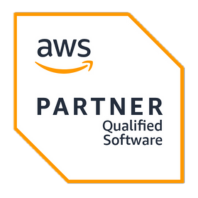What is ETL ?
In computing, extract, transform, load (ETL) is a three-phase process where data is first extracted then transformed (cleaned, sanitised, scrubbed) and finally loaded into an output data container. The data can be collated from one or more sources and it can also be outputted to one or more destinations.
Any successful organisation’s growth is driven by the efficiency and agility of its business processes. ETL (Extract, Transform, and Load) tools are critical in delivering the speed required by an organisation to efficiently access its data. To keep up with the growing amount of data and data sources in the digital age, ETL modernisation is becoming a must.
Why modernisation of ETL is important?
Conventional ETL tools do not work well to handle the complexity of data from various sources: today, data can be stored in the cloud or on premise; it can be static or stream data, and it can be stored in repositories located in different countries with different data protection laws. Traditional tools were developed when it was necessary to manage smaller volumes of data and processes. These tools do not meet the requirements of the modern data landscape.
Organizations are seeking to use open source frameworks to do ETL operations, which provide similar and better functionality than traditional ETL solutions, because typical ETL product licences cost millions of dollars.
When it comes to real-time data processing from numerous social media platforms, legacy ETL technologies have challenges. For new age digital applications, scalable, quicker, and more adaptable infrastructures provide real-time data processing.
So there is a need to modernise ETL data pipelines to support real-time data in addition to transactional and analytical data conversion.
Conventional ETL tools find it difficult to provide effective and flexible metadata management and lineage across systems in order to meet stringent regulatory and governance requirements.

Taking the first steps towards modernity
Many large companies have been experimenting with open source processing frameworks to change typical ETL platform data pipelines and operations.
Conventional ETL data processing pipelines, which were primarily designed and built for batch processing over decades, are under strain, while open source processing frameworks are catching up. These frameworks are also well-aligned with Big Data applications for processing and managing massive amounts of structured, semi-structured, and unstructured data created by a variety of new and current enterprise systems.
Modern ETL takes advantage of the cloud’s benefits to provide accessibility without sacrificing security, as well as easy scalability at a manageable cost. With cloud and SaaS-based pipeline tools, you can focus on moving your data to the cloud while the vendor handles backups, encryption, security, and infrastructure. Full-featured, cloud-deployed ETL products allow you to benefit from the cloud’s speed, scale, savings, and simplicity while maintaining control over security, governance, and compliance.
Modern ETL tools can import and export structured and unstructured data from almost any source, from spreadsheets to IoT sensors. They can also scale quickly and affordably to accommodate fluctuating workloads.
ETL tools today are designed to work with both on-premises and cloud data warehouses, such as Amazon Redshift, Snowflake, and Google BigQuery. As new data warehouses emerge, connectors are added to support new ETL integrations.
Modern ETL systems are designed to capture streaming data and integrate with data platforms to support real-time data pipelines and on-the-fly schema changes, ensuring that your analysts and business decision makers have constant, unlimited access to all of your data at all times.
ETL vs ELT
ETL (extract transform load) and ELT (extract load transform) are 2 separate data integration processes that employ the same steps in a different order to aid in various data management functions.
Both ELT and ETL extract raw data from multiple sources such as an ERP platform, a social media platform, Internet of Things (IoT) data, a spreadsheet, and others. ELT then loads raw data into the target data warehouse, data lake, relational database, or data store. This enables data transformation to occur as needed. It also allows you to import datasets from the source. After data is extracted, it is defined and transformed to improve data quality and integrity before being loaded into a data repository.
ETL is the way to go if you’re constructing data repositories that are smaller, need to be maintained for a longer amount of time, and don’t need to be updated frequently. If you’re working with large datasets and real-time big data management, ELT is the way to go.
The effective approach for ETL modernization
- By justifying the proper use cases and return on investment, involve the necessary stakeholders from IT and business across business divisions.
- To define the overall roadmap, assess and prioritise subject areas, associated business process-related data pipelines, and dependent workloads from other process areas in the current data estate for conversion.
- Analyse the legacy data pipelines thoroughly and divide them into one-to-one conversion to open source ETL or re-architecture/re-factor scenarios. Pipelines should be classified as re-architecture when one-to-one conversion of batch data processing workflow is no longer relevant and must be re-engineered for the new age and digital use cases.
- Choose the best approach, solution, platforms, and frameworks for conversion automation, semi-automation, and manual custom coding.
- Package, orchestrate, containerize, and deploy modernized pipelines for scalable implementations and clusters on cloud, on-premises, and hybrid frameworks.
- Establish and implement well-governed operationalization processes to monitor and maintain the environment.
In order to ensure optimal investments and the acceleration of the modernization journey, induct the correct individuals as well as upskill traditional ETL pipelines development and architect staff to work on open source framework components.
How DAIMLINC can help in modernizing your ETL pipelines?
Daimlinc has incredibly skilled Data and Analytics consultants who can help you migrate or modernize your traditional ETL pipelines to cloud-based ETL or ELT pipelines from start to finish.
If you’re wanting to modernize your ETL pipelines and need someone to help you from start to finish, talk to one of our experts.








